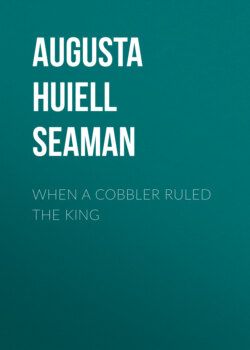Читать книгу When a Cobbler Ruled the King - Augusta Huiell Seaman - Страница 3
FOREWORD
ОглавлениеAbout the tradition of the "Lost Dauphin" there hovers a romance and charm perennially new, and history contains perhaps no more appealing little figure than that of Louis XVII of France.
At the time when the tempest of the French Revolution submerged the throne of the Bourbon monarchy, Louis Charles, royal Dauphin, was but a child of seven. On his sunny head, for the space of three years, the Terror wreaked its vengeance; and at the age of ten, it would have been difficult to recognize in the forlorn little captive of the Temple Tower, aged by imprisonment and abuse, and experienced in many forms of suffering, the once light-hearted and lovely child of Versailles and the Tuileries.
History in its most accepted form has chosen to close this regrettable chapter with the death of the little prince at the age of ten, and while still in his unjust captivity. With the receding years, however, there has arisen a not unreasonable doubt of this premature ending. Evidences strangely convincing have come to light, revealing a possibility of his having been rescued, spirited away from his native land, and allowed to live out the alloted number of his days in peaceful obscurity.
There are few of us who do not welcome this possibility, who do not relish the thought that his watchful and heartless tormentors may have been cleverly hoodwinked. And added to our pleasure in a happier fate for this much-wronged child of monarchy, is the delightful romance and mystery with which a possible escape and an existence thenceforth incognito has surrounded the history of the "Lost Dauphin." In the field of fiction the subject affords an all but endless variety of solution, and numerous are the romances woven about the person of "Little Capet." Curiously enough, few if any of these novels are quite suitable for younger readers, though the subject is one that should have a special appeal for the hearts of youth, since the chief personality is a child of peculiarly winning characteristics, and one who endured diversified and exciting vicissitudes.
Such a story I have striven to relate in When a Cobbler Ruled the King, endeavoring to present a picture, faithful as far as it goes, of the historical and political situation. It may add to the interest of the story to know that except for the persons of "Jean," "La Souris" and "Prevôt," who are pure fiction, there is not one character in the book but has a counterpart in history. These characters are in the main obscure enough to admit of much latitude in fictitious presentation. The Citizeness Clouet, of number 670 rue de Lille, was actually the laundress for the Temple Tower, and her little daughter was occasionally introduced into the prison by Commissary Barelle to play with the captive prince. Had there been schemes of escape concocted by the few friends remaining to royalty, as doubtless there were, it would be scarcely strange if the laundress had been involved in them.
Be these things as they may, it is to be hoped that the history of the throneless, crownless, ill-used child-king, Louis XVII of France, will make its own appeal to the hearts of all childhood.
A. H. S.
Richmond Hill, L. I.
February, 1911.
